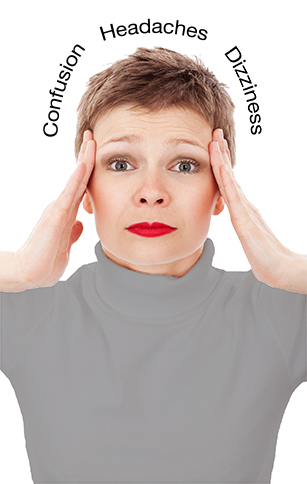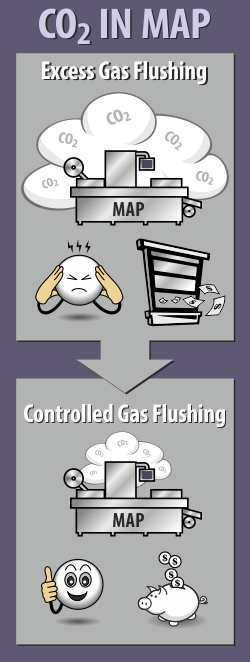-
Home
-
-
Blogposts
-
-
Carbon Dioxide in Modified Atmosphere Packaging: The Good, The Bad and The Ugly
-
Carbon Dioxide in Modified Atmosphere Packaging: The Good, The Bad and The Ugly
CO2: friend and foe
Carbon dioxide, or CO2, is a really useful gas. It is used widely in the industry, in everything from making fizzy drinks to refrigeration. In low concentrations CO2 is a perfectly harmless gas. In fact it occurs naturally and is present in the air that we breathe. But in high amounts it can be dangerous.
”Industries which use CO2 must be certain that they are protecting their workers properly”, says Morten Torngaard, Sales Manager at Dansensor, the Denmark-based specialist in equipment for the Modified Atmosphere Packaging (MAP) industry. ”And because the gas is colorless and has no odor, it can be difficult to detect if levels are rising to potentially risky levels.”
In the air carbon dioxide is present in a concentration of around 350 parts per million (ppm). But in much higher concentrations it can affect our health. For this reason most countries class it as a hazardous substance and place a limit of 5000 ppm for exposure levels.
CO2 hazards
At levels above 5000 ppm inhaling carbon dioxide over a long period can cause:
 |
- Headaches
- Confusion
- Dizziness
- Loss of consciousness
- In extreme cases, even death
|
CO2 in MAP
”Carbon dioxide is widely used in Modified Atmosphere Packaging”, notes Morten. ”It is often part of a gas mixture, with nitrogen for example, which is used to flush food packaging to remove oxygen. This prolongs the shelf life of the food and keeps it looking fresh.”
However, to ensure complete flushing of the package operators sometimes use an excess of gas and this can overflow into the production area. ”If CO2 is part of the gas blend and this flows into the production area it could present a potential hazard to staff”, Morten says.
This can especially be a problem with vertical and horizontal form fill and seal machines, which are widely used in the food packaging industry. Morten explains: ”This is because these machines are ’open-ended’, so excess gas is able to spill out. And because CO2 is heavier than air, it is possible that it could accumulate in the production zone.”
Keeping CO2 at healthy levels in the MAP production area
There are two approaches to help ensure that this does not become a problem.
1. Install a sophisticated ventilation/extraction system in all MAP production areas.
Pros:
- Will help ensure an excess of CO2 does not accumulate in the production area
Cons:
- Expensive to install
- Can be costly to run because of electricity use
- Needs to be maintained – more cost
- Using an excess of gas is wasteful and costly
2. Make sure that only the correct amount of gas is used to flush the packages. This can be done by installing an on-line gas analyser that controls the delivery of the gases in the mixture to precise, pre-set levels.
Pros:
- You do not need to deliver excess gas: you use only the amount you need
- This saves on gas costs and hence reduces production costs
- You do not need to install expensive ventilation/extraction systems
- Makes it much less likely that there will be an excess CO2 in the workplace, benefiting employees’ health
Cons:
- Initial investment in the analyser. But savings can be quickly recovered by using less gas.
Smart gas delivery: a win-win situation
”Gas analyzers that constantly monitor the gas level in the package to ensure the correct levels are being reached”, Morten comments.
”If the levels drop or start to become too high the system automatically adjusts the gas flow and if it is not able to reach the correct flow it will alert the operator or even stop the packaging process.”
In most cases analysers can be linked to a ’smart’ gas blender that is supplying the mixture, ensuring maximum performance and the best control of both the gas flushing and gas mixing process.
”This system ensures that it is much less likely that there will be a build-up of CO2 in the production area”, Morten concludes. ”It also saves on gas – less waste and less cost. In other words, a win-win situation.” |
|
 |